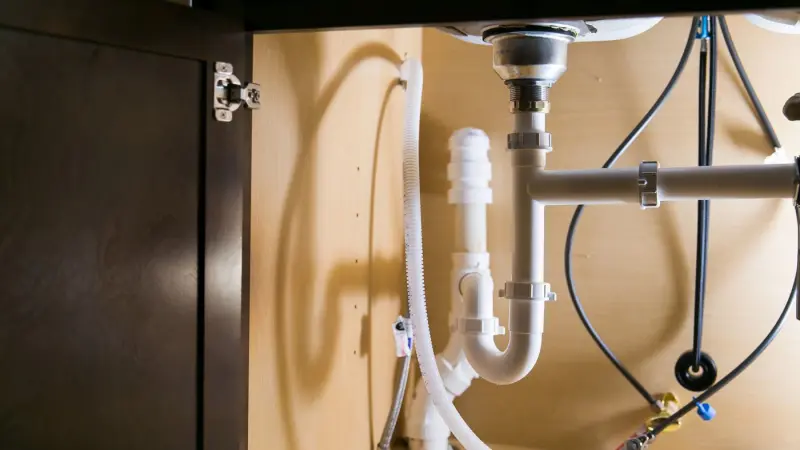Here are some of the main parts of your plumbing system and how they work.
How to Locate Individual Shutoff Valves
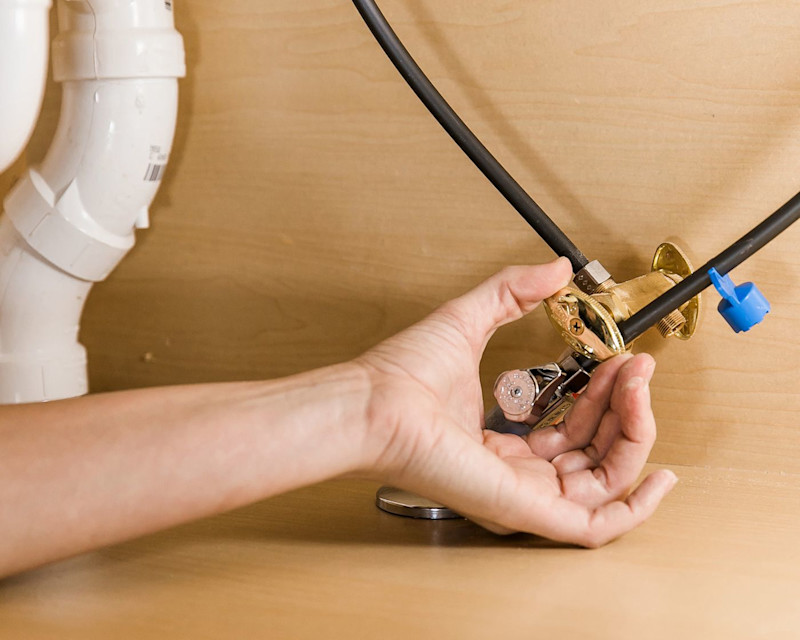
The location of shutoff valves in your mobile home varies depending on the model of the home. There are individual shutoff valves located throughout your home in areas such as the kitchen, bathroom, utility room and sometimes in the garage of modular homes. You'll usually find these individual valves underneath each toilet and sink in the home. The individual valves allow you to control the water for each fixture without affecting the rest of the home.
How to Locate the Main Shutoff Valve
Use the main water shutoff valve to help minimize potential water damage to your home if you're unable to contain a leak to a single fixture. The whole house water shutoff valve will be a red handled valve that you can typically find in the following areas of your home:
- The utility room, generally in the same box with the connections for the washing machine.
- On the pipe that comes into the home for homes with a well water system.
- If your home is connected to a city water system, the whole house shutoff valve might be located at the water meter.
It's a good idea to locate your water shutoff valves prior to a leak in order to help save time and minimize damage in case of emergency.
If you're unable to locate the main water valve in your home, contact the home center where you bought your home or the home building facility where your home was built with the model number of your home and they can assist you.
Draining Your Sewer Line
Along with a main water line, your home also has a main sewer or septic line that is necessary to drain the water and waste from your bathtubs, toilets and sinks. If this line gets clogged to the point that a plumbing fixture will not drain, you may be able to clear the blockage with a plunger or a commercial drain cleaner.
If these standard fixes don't work, it is likely that the system needs to be cleaned using the main cleanout. We suggest that you hire a professional to make sure your system is cleaned properly. Your local home center may have recommendations for professionals in your area who can help you.
Unclogging the Aerator on Your Faucet
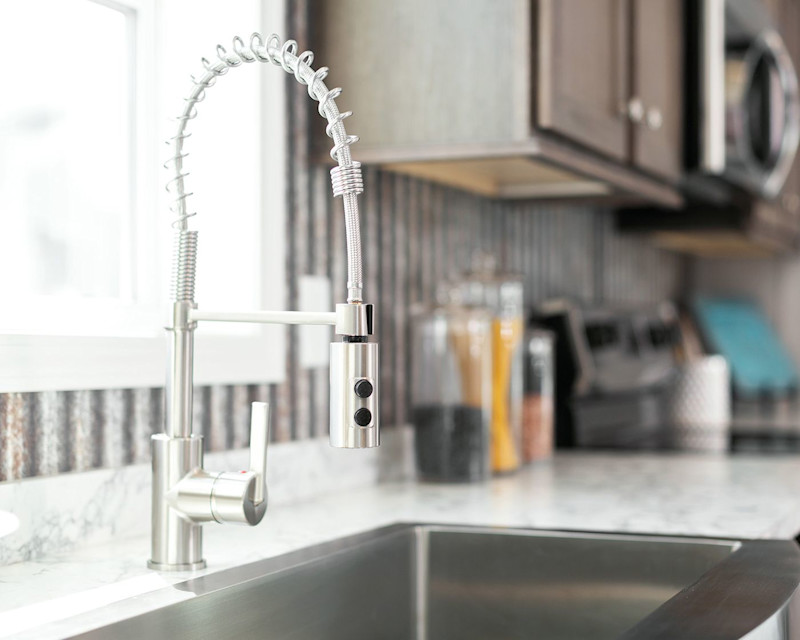
An aerator is a screen that is attached to the tip of a faucet that controls how much water comes out of a faucet. The aerator divides the water into multiple streams, allows the water to mix with air and creates a measured, consistent flow.1 It is not unusual for the water flow from a faucet to be unsteady if another faucet or appliance in the home is using water at the same time.
If the water flow from a faucet is unsteady or seems restricted when water is not being used elsewhere in the home, it might mean that the aerator is clogged. To unclog it, unscrew the aerator from the end of the faucet, take out the screen and clean it to remove any blockage. If the aerator is the issue, once you've cleaned it and placed it back in position your water flow should return to normal.
It's not a good idea to remove any of the screens permanently from the aerator, as this will affect the water flow and the design of the faucets.
If neither of these resolutions resolve the unsteady flow, this is typically a result of pressure fluctuations in the supply of water to the home. If your home is connected to the municipal system, contact your local utility company and notify them of the issue. If your home is connected to a well system, contact the company that installed the well system or a plumbing professional for further assistance.
Adjusting the Tempeture on Your Water Heater

Clayton Built® homes will either have a gas or electric water heater. There are a couple of different places where your hot water heater may be located. Some possible locations are near the furnace or in the primary bedroom closet.
You can increase efficiency and save money by not overheating your water. The temperature of the water heater is preset to 105 degrees and we recommend keeping it at that temperature. You do have some room to adjust the temperature of the water heater if desired, but the temperature should not be set above 130 degrees to avoid overheating water and potential scalding.
You can also save money and energy by turning the heater down when leaving your home for vacation or an extended period.
About Your Manufactured Home's Toilet
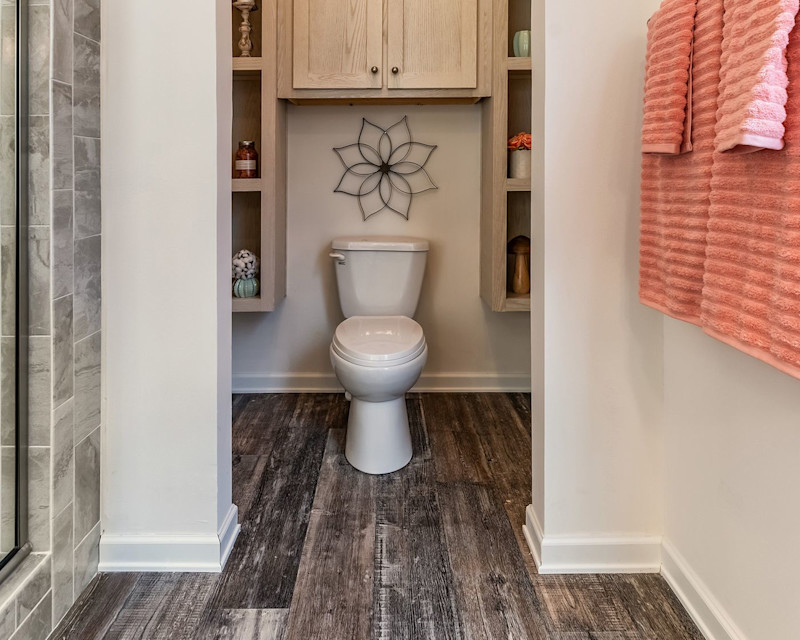
The toilets in your Clayton Built® home use a low capacity 1.6-gallon tank and use less water per flush than a standard toilet, potentially saving thousands of gallons of water each year for a family while also saving you money!
While a low capacity tank can have a bad rap, we think that saving money annually on utilities and conserving water is well worth an occasional need to double flush!
Just like with the sewer line, if stoppage occurs, try clearing it with a plunger or a commercial drain cleaner. If these solutions don't correct the blockage, you should hire a professional plumber. Your local home center may have recommendations for professionals in your area who can help you.
Maintaining Sink Traps
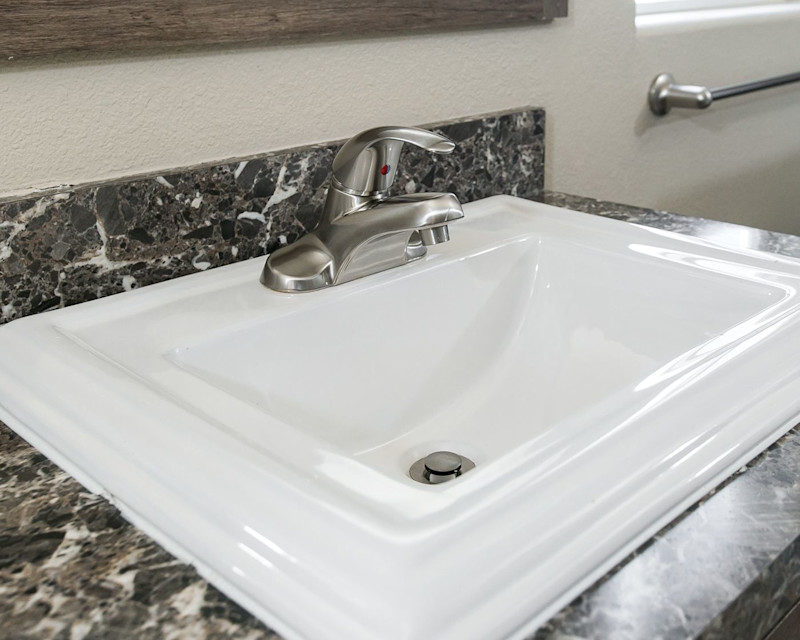
Sink traps, or drain baskets, are designed to trap debris that have come down the sink drain to prevent a potential clog. Another feature is the p-trap, which prevents sewer gases from passing into the home through your plumbing.
If you have a guest bathroom or a bathroom that is not used regularly, be sure to run water into the drain at least once a month to keep water in the trap so that it can work properly.
Protecting Your Pipes From Freezing
If you live in an area where the temperature drops below freezing, it's important to remove your hose from the outside faucet. This can help prevent water from freezing inside the hose and backing up into your water line which could potentially cause major water problems. You should also drain and cover any outdoor water spigots you may have before winter weather arrives to prevent them from freezing.
Now that you're aware of the different parts of your plumbing system, you will be even better prepared to take care of your home! For more ways to stay on top of home maintenance, check out our Home Care Guide tips.
Remember, in the case of a plumbing emergency, do what you can to stop the water flow, then contact a professional. If you have any additional questions, contact your local home center or the home building facility where your home was built for more help.


